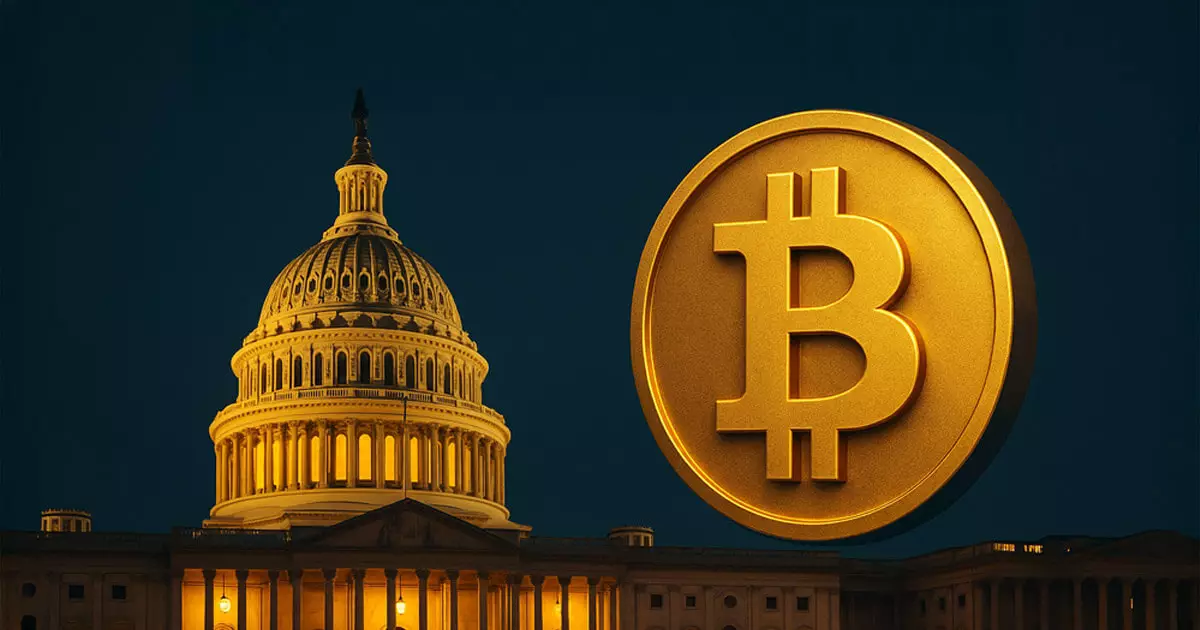In an era where financial innovation often teeters on the edge of recklessness, the recent emergence of a corporate-led Bitcoin coalition signals an aggressive shift towards mainstream federal adoption. Led by influential executives from cryptocurrency giants, this coalition is not merely advocating for digital assets—they aim to embed Bitcoin into the very fabric of national finance. They champion it as a resilient store of value, potentially shielding the economy from traditional monetary vulnerabilities. But beneath the surface lies a more calculated ambition: transforming Bitcoin into a pillar of national economic policy, regardless of the associated risks or the political tumult it may provoke.
This push for a “Strategic Bitcoin Reserve” is more than a technological upgrade—it’s a fundamental challenge to the existing monetary order. The coalition’s proposal to accumulate up to one million Bitcoin, valued at over a hundred billion dollars, is less a financial strategy and more a bold assertion of power. If enacted, it could rewrite the way governments approach wealth preservation, all while surfacing critical questions about sovereignty, regulatory control, and the long-term stability of such an untested reserve. Are these corporate titans overestimating their influence, or are they awakening a new financial behemoth eager to reshape geopolitics?
The Illusion of Control in a Volatile Market
While proponents paint Bitcoin as a secure hedge and a future-proof asset, anyone with a critical lens recognizes the inherent volatility and unpredictability of the cryptocurrency market. The coalition’s vision appears rooted in confidence—from its claim that Bitcoin could serve as a long-term storage mechanism for government assets to their push for decentralized storage facilities nationwide. Yet, they overlook the stark reality: Bitcoin’s value swings wildly, influenced by regulatory crackdowns, technological developments, and macroeconomic shocks.
This overconfidence is alarming. The idea that the U.S. government can seamlessly integrate Bitcoin into its treasury with built-in safeguards—like limiting sales to 10% every two years—begs the question: does anyone truly understand what they’re holding? The decade-long maturation of Bitcoin has demonstrated that its stability is fragile at best, making the notion of it replacing or supplementing traditional reserves a perilous gamble. The coalition’s narrative risks obscuring the genuine challenges with simplistic promises of guarding against inflation or boosting financial innovation.
A Center-Right Perspective: Pragmatism Meets Caution
From a pragmatic, center-right perspective, this move can be viewed neither as a reckless plunge nor as an unequivocal miracle solution. Instead, it embodies the potential of technological evolution within conservative fiscal frameworks—if approached with strategic caution. While embracing innovation is essential, it must not come at the expense of fiscal responsibility or national security.
The notion that the government can, or should, hold vast reserves of a highly volatile and decentralized currency raises concerns about oversight and control. Yet, there’s merit in exploring a balanced approach: leveraging Bitcoin’s potential to diversify assets and guard against inflation, without blind faith in its stability. The push for a federal Bitcoin reserve could serve as a strategically prudent allocation, provided safeguards and oversight are prioritized over ideological zeal.
This movement signifies a recognition that digital assets are here to stay—and that they challenge traditional monetary instruments. However, attempting to crown Bitcoin as a cornerstone of national wealth must be tempered with skepticism and rigorous risk management. Governments, especially those wielding significant power, should not gamble with untested systems at the expense of economic stability. Instead, a measured, realistic approach—embracing innovation but acknowledging limitations—remains the wisest course of action in this tumultuous new frontier.

